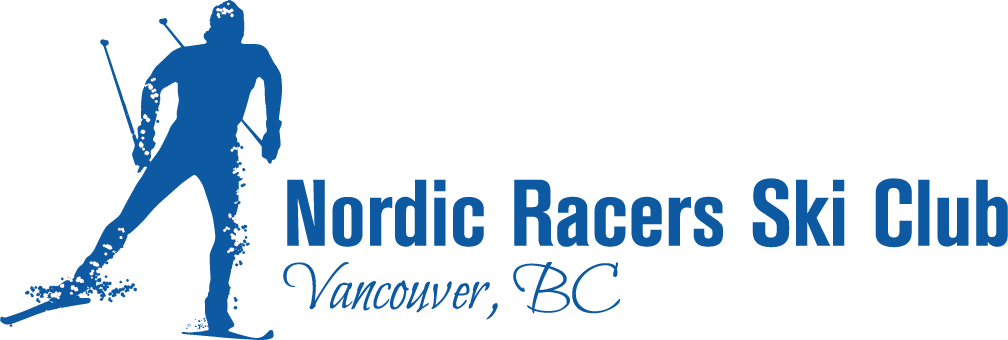Improving Your One Skate
Improving Your One Skate
By Lana Ohler-Madsen, CANSI X-C Instructor level IV, X-C Course Conductor Level III
For most recreational skiers, one skate is a technique used for fast trail conditions. More advanced skiers will use one skate for acceleration and even for uphill. One skate is a challenging technique for many skiers because it requires strong balance and pole-assisted glide in order to be efficient. In this article, the reader will be reminded of key technique points and exercises that can improve a skier’s one skate technique.
Balance on one ski is fundamental to all ski techniques, and lack of strong balance is especially visible in one skate. Instructors will notice that beginner skaters either ski (waddle) with their legs far apart and/or have very short strides. One exercise that will help a beginning skater is “free skating” or skating without poles. Once skiers are able to maintain a cadence and speed, have them lengthen their glide with each stride. Working on a slight downhill will help participants concentrate on glide and balance rather than power. A second exercise that can be used for balance is double poling on one side. This improves balance, especially if each double poling action is followed by ever lengthening glide. To force the skier to use just one ski ... well, how about initially giving them just one ski? As they improve in their ability to glide on one ski, give them both skis and have them double pole three to five times on each side with ever longer gliding action. Starting in tracks and moving to skate lanes allows students to focus on extended balance and glide. Once out of the track on the skate lane, tell students to “click theirheels.” This is a time-honored and very effective addition to the above exercises.
Ensuring that the hips are above or ideally in front of the ankle at the feet-together position is another key technique point for all skaters. One exercise that may help skiers is to have them hold the poles behind the glutes and push forward. Extend this exercise by having the student rise up or stand on a straighter leg. This kinesthetic drill often helps to remind skiers to push their weight forward. A second exercise is to have skiers find the “sweet spot” on their foot. The sweet spot is found when the skier is on the ball of the foot. Try having students jump and land in the athletic position (stationary). They will almost always land with the hands forward, knees and ankles slightly bent, and most importantly, withtheir weight on the “sweet spot.” You can extend this exercise by having students hop periodically while they are in motion (gliding). This is an advanced exercise, which helps more proficient skiers to move their weight further forward during the glide. A third exercise, suitable for beginner and intermediate skaters, is to have them ski backwards down a very gentle slope (shallow enough that they don’t gain significant speed). When skiers are going down a gentle slope in reverse, they will always feel their weight on the ball of the foot. Now remind them to repeat this feeling while one skating. As an instructor, you may also notice that students whose weight is too far back are also recovering their skis high off the snow. When students are able to move their weight forward, the recovery foot almost always recovers as a pendulum close to the snow.
Effective one skate timing occurs when the double poling action precedes the skating action. Many beginner and even some intermediate skaters double pole and skate at the same time, creating what is really a double offset rather than a one skate. One exercise to help students with effective timing is to have students do three to five double poling actions and then add a small skating step after the last double pole. Extend this exercise when the student is successful by adding more upper body crunch
and longer glide, always focusing on initiating the cycle by double poling first, then adding the skate action. The one skate mantra is “double pole, glide; double pole, glide; double pole, glide.” The criticalobservation point is that the double poling action must precede the skating action.
By the way, as a professional CANSI instructor, you may have caught the fleeting reference in the previous paragraph to upper body crunch. Upper body crunch is critical, especially when using the one skate to accelerate, or when going up a shallow hill. Initiating poling with a crunch engages the abdominal muscles. Failure to initiate poling with an upper body crunch indicates that the skier is using the small shoulder and triceps muscles. Why rely on the small muscles of the arms when you have six abdominal stallions waiting to be released? To promote this critical technique point, have students double pole in classic tracks. Ensure they are engaging with the core when poling. Now have them do the same double pole exercise while balancing on one foot in the track. Finally, extend the same exercise to the skate lane. The upper body visual will be double pole; the lower body will be skating. Powerful poetry in motion.
Try these fundamental exercises with your students to improve technique, speed and the fun factor. And that is the segue to the most important of all instructor pointers: Make sure that your students are having fun. If they are not, you may not need to worry about improving their technique in a subsequent lesson.
